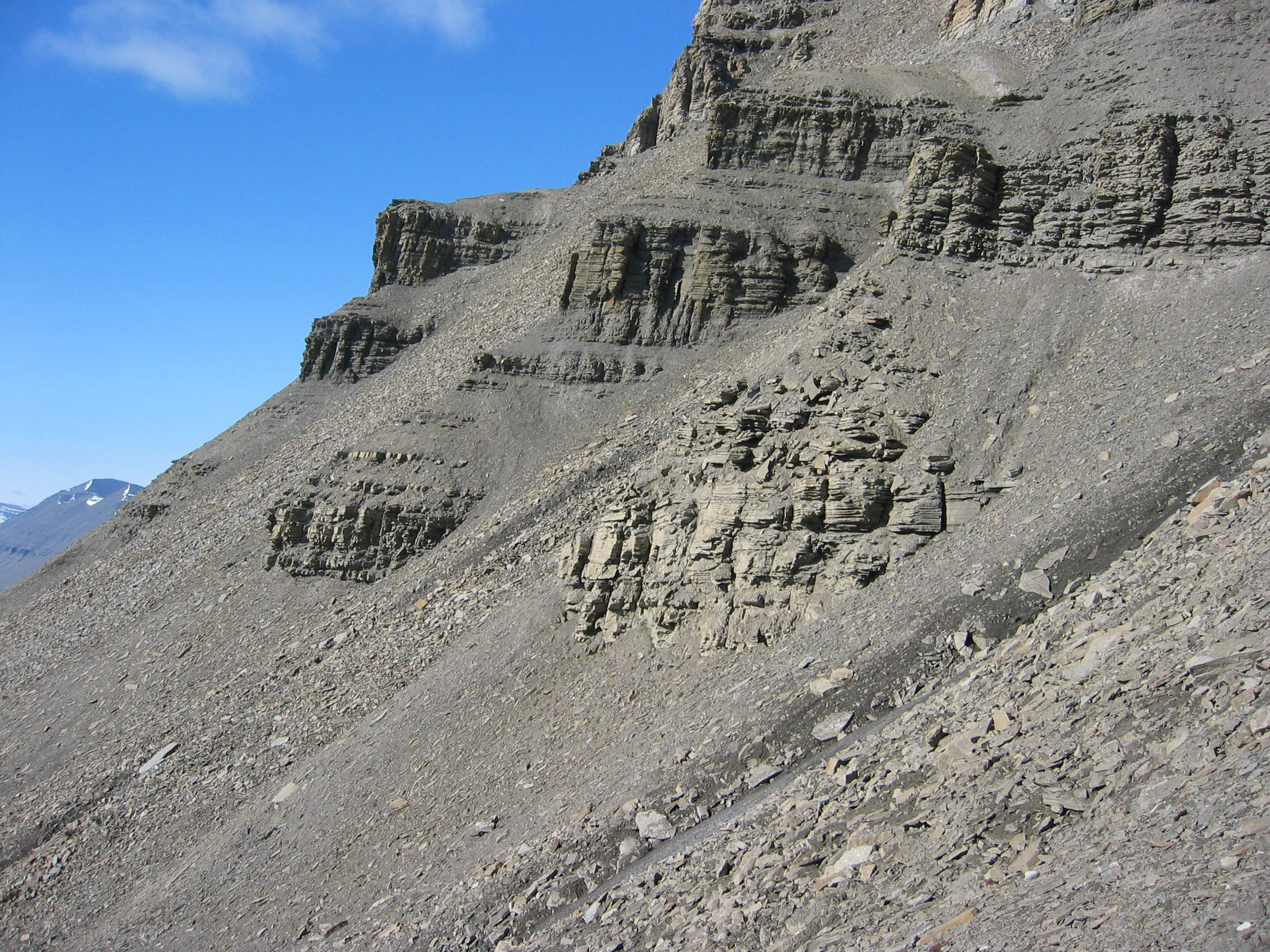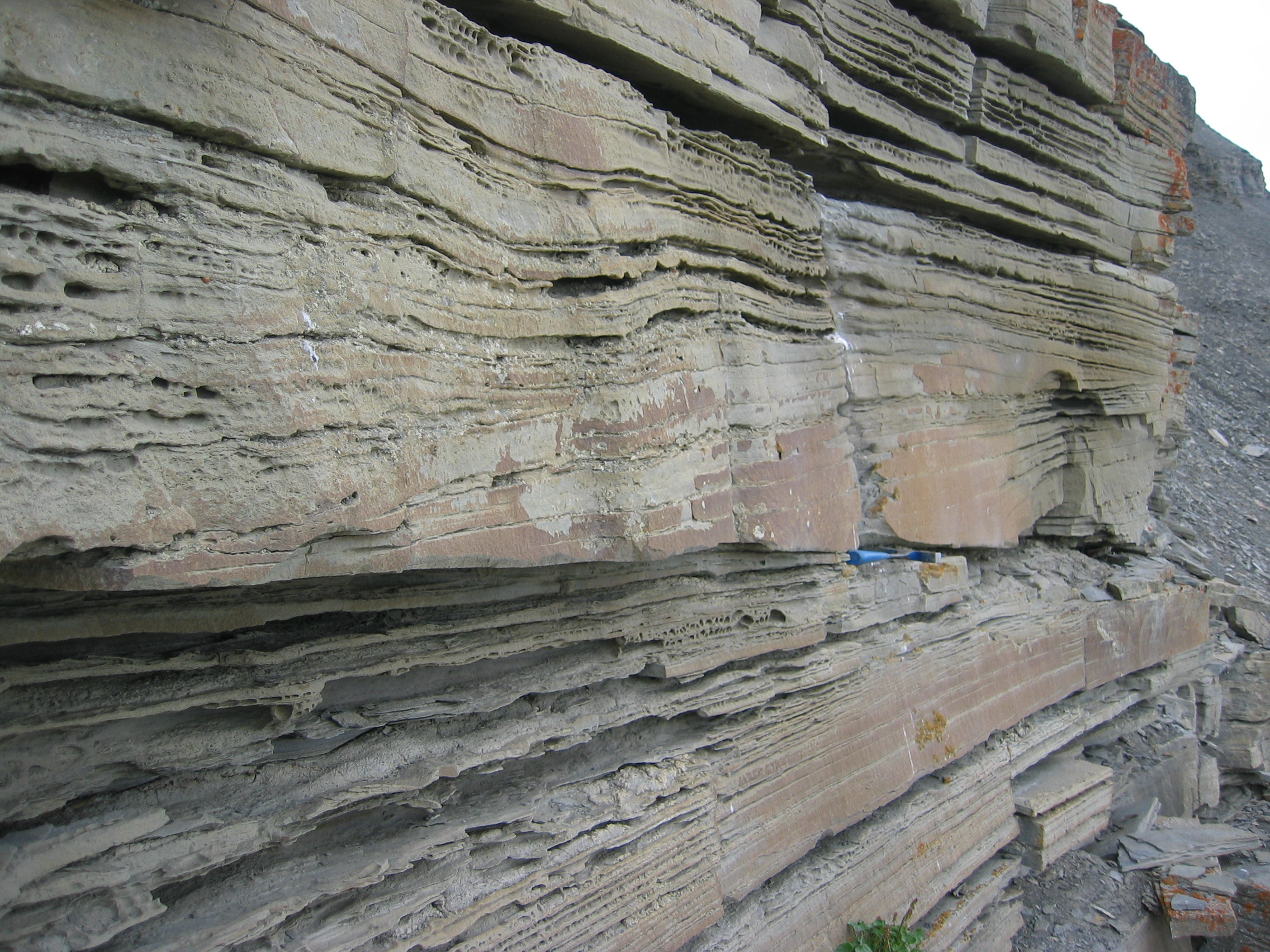|
DYNAMIC STRATIGRAPHY WORKGROUP |
|
Publications and presentations: Publications: Petter, A.L., and Steel, R.J., 2006, Hyperpycnal flow variability and slope organization on an Eocene shelf margin, Central Basin, Spitsbergen: American Association of Petroleum Geologists Bulletin, v. 90, p. 1451-1472.
Conference/meeting presentations: Petter, A. L., P. Plink-Björklund, and R. J. Steel, 2007, Hyperpycnal-flow evolution from the shelf edge to the lower slope as evidenced by slope-channel deposits in the Tertiary Central Basin of Spitsbergen: AAPG/SEPM Annual Meeting, Long Beach, California. Petter, A. L., and R. J. Steel, 2006, High- versus low-density hyperpycnal flow: deposits and relative timing within 4th-order genetic sequence, Central Tertiary Basin, Spitsbergen: GSA Annual Meeting, Philadelphia, Pennsylvania, v. 38, no. 7, p. 541. Petter, A. L., and R. J. Steel, 2006, High-latitude recipe for sand delivery to the deepwater via hyperpycnal flow: a Greenhouse example from the early Eocene, Central Spitsbergen Basin: AAPG/SEPM Annual Meeting, Houston, Texas. Petter, A. L., and R. J. Steel, 2005, Deepwater-slope channels and hyperpycnal flows from the Eocene of the Central Spitsbergen Basin: predicting basin-floor sands from a shelf edge/upper slope perspective: AAPG/SEPM Annual Meeting, Calgary, Alberta, Canada. Petter, A. L., 2004, Eocene falling-stage deltas and associated upper slope channels; an outcrop study of a deepwater feeder system (central Spitsbergen Basin): Geological Society of America South-Central Section Meeting, College Station, Texas, Abstracts with Programs – Geological Society of America, v. 36, p. 23. |
|
People: Andrew Petter, Ron Steel
Research question(s): Identification of sediment bypass (particularly sand) at the shelf edge is critical to deepwater exploration. Hyperpycnal flow from rivers at the shelf edge provides a potential mechanism for sand to be transported across the slope to the basin floor. How can sediment delivery to deepwater by hyperpycnal flow be identified in the rock record? |
|
Hyperpycnal flow variability and slope organization on an Eocene shelf margin, Central Basin, Spitsbergen |
|
Summary of work: The shelf margin of an early Eocene fourth-order sequence with an attached basin-floor fan in the Central Spitsbergen Basin was examined in outcrop. Turbidity currents were fed mainly by hyperpycnal flow emerging from shelf-edge deltas. The lifespan of any turbidity current was determined primarily by the sediment concentration of the flow and the duration of the river flood. High-density hyperpycnal flows created sand-filled slope-channel complexes 10-15 meters (33-49 feet) thick and 100-200 meters (328-656 feet) wide that served as conduits for bypass to the basin floor. Low-density hyperpycnal flows were unconfined and deposited heterolithic lobes on the slope. Shelf-margin accretion of ~1.5 kilometers (0.9 miles) during the falling stage gave way abruptly to bypass in the early lowstand. Most of the basin-floor fan growth was achieved after shelf-edge incision and before relative sea level rise. Coastal-plain aggradation in the late lowstand sequestered sediment from the shelf-edge distributaries, effectively diminishing high-density hyperpycnal flow output. The late lowstand was therefore marked by a second phase of shelf-margin accretion with only limited bypass to the basin floor, and a heterolithic, prograding complex downlapped the early lowstand channels. Transgression ultimately led to abandonment of the shelf-edge delta complex and accumulation of mainly mudstone on the margin. The shelf-margin architecture exhibited by this sequence should serve as a type example of a deepwater feeder system in which hyperpycnal flow is the primary initiator of turbidity currents for sand accumulation on the slope and basin floor. |
|
Upper-stage, plane-parallel lamination within slope channel, Spitsbergen. Such sedimentary features are considered characteristic of sediments deposited from sustained turbidity currents such as hyperpycnal flow. |



|
~10 m |